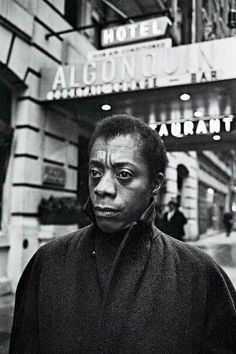Our discussion on whether the more masculine David constructed by Michaelangelo was an accurate representation of his progression into young adulthood, or imposed to be consistent with gender norms, led me to want to explore further the effects of other impositions of sexuality and gender norms surrounding the novel. Korey Garibaldi’s lecture featured pictures of a younger, more androgynous presenting David created by Donatello and an older, more masculine-presenting David constructed by Michelangelo. This transition between how David is represented is consistent with the historical context of the time. Because societies began embracing the female, male gender binary and other heteronormative standards, it would be easy to see how this transition exemplifies fitting into these norms and bounds. It is plausible that this artistic transition led Baldwin to name his main character in Giovanni’s Room “David” in protest to the shift to conform to gender norms and imposed masculine standards.
As the presentation was focused on exploring the historical context behind Giovanni’s Room, it also illuminated various other examples of people from writers, to monarchs, to actors who struggled to conform to heteronormativity and other imposed societal standards on sexuality and gender. While Giovanni’s Room encompasses many elements of Baldwin’s own life and is arguably semi-autobiographical, it features two white main characters. David is a white, Anglo-Saxon, Protestant man, and Giovanni is an Italian, Catholic man. It is plausible that Baldwin chose to create characters with those identities to represent his history with love in a way that did not directly implicate him. While Italians were discriminated against similarly to Black people, they were white and could be in a book about queerness, whereas Baldwin himself could not. Because prejudice against Black people was so prevalent, it is probable that Baldwin acknowledged Giovanni’s Room would not have been well-received because of the double-bind of racism and homophobia. Though Baldwin is a critique of these imposed sexuality norms, it is possible that his intersectional identity as a Black, queer man contributed to his decision to center the novel on two white main characters. His experiences may have led to his conformity to this racial norm.
Because both Go Tell it On the Mountain and Giovanni’s Room explore the common human struggle of fitting into societal norms and ensuring one’s identity is consistent with these norms, it is evident that Baldwin intended for his writing to serve as a subtle backlash to these norms. The references to historical art and cultural references explored by Garibaldi displayed a long history of those from writers, to monarchs, to actors and more struggling to conform to heteronormativity and other imposed societal standards on sexuality and gender. Baldwin clearly disagreed with these norms and focused his career on creating work that subtly critiques these norms while promoting a message of love and acceptance. Lil Nas X’s MONTERO (Call Me By Your Name) Video is a blatant protest to imposed societal norms on sexuality and is a clear evolution of the work Baldwin was doing to show us how to protest.
